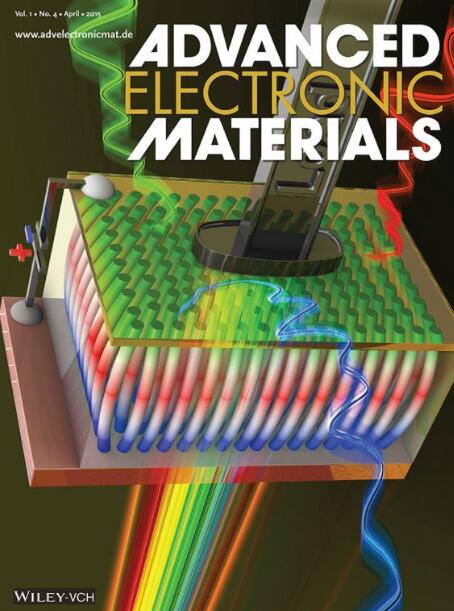应变工程研究锰酸钙的多铁性
IF 5.3
2区 材料科学
Q2 MATERIALS SCIENCE, MULTIDISCIPLINARY
引用次数: 0
摘要
多铁材料由于具有多铁序,特别是铁电序和磁性序,在下一代电子技术的多功能器件和高密度存储中具有潜在的应用前景,引起了人们的广泛关注。然而,由于磁点群的对称性约束和d轨道中铁电性和磁性之间的电子组态冲突,阻碍了铁电性和磁性序的共存,导致了多铁质的稀缺。在这项工作中,通过拉伸应变工程,在非铁电磁体锰酸钙(CaMnO3)中实现了多铁性。极化-电场(P - E)磁滞回线证明了居里温度高达45 K的铁电性,这也表明自发极化沿[100]和[010]方向排列。同时,磁化磁滞回线和温度相关磁化测量都证实了125 K以下的磁化强度,为拉伸应变CaMnO3薄膜的多铁性提供了令人信服的证据。此外,在10K以下发现磁化强度突然增加,表明由于热波动的抑制,建立了新的铁磁秩序。这些发现强调应变工程是诱导非铁电磁体多铁性的通用策略。本文章由计算机程序翻译,如有差异,请以英文原文为准。
Multiferroicity in Calcium Manganate via Strain Engineering
Multiferroics have attracted intense interest due to their potential applications in multifunctional devices and high‐density storage for the next‐generation electronic technologies, owing to their multiple ferroic orders, especially ferroelectric and magnetic ones. However, the symmetry constraints imposed by magnetic point groups and the electronic configuration conflicts in d orbitals between ferroelectricity and magnetism hinder the coexistence of ferroelectric and magnetic orders, leading to a scarcity of multiferroics. In this work, multiferroicity is achieved in the non‐ferroelectric magnet Calcium Manganate (CaMnO3 ) through tensile‐strain engineering. The ferroelectricity with a Curie temperature up to 45 K is evidenced by the polarization‐electric field (P ‐E ) hysteresis loops, which also suggest that the spontaneous polarization aligns along [100] and [010] directions. Meanwhile, the magnetization below 125 K is confirmed by both the magnetization hysteresis loops and the temperature‐dependent magnetization measurements, providing compelling evidence for the multiferroic nature in the tensile‐strained CaMnO3 films. In addition, an abrupt increase in magnetization is found below 10K, indicating the establishment of a new ferromagnetic order due to the suppression of thermal fluctuations. These findings highlight strain engineering as a universal strategy to induce multiferroicity in non‐ferroelectric magnets.
求助全文
通过发布文献求助,成功后即可免费获取论文全文。
去求助
来源期刊

Advanced Electronic Materials
NANOSCIENCE & NANOTECHNOLOGYMATERIALS SCIE-MATERIALS SCIENCE, MULTIDISCIPLINARY
CiteScore
11.00
自引率
3.20%
发文量
433
期刊介绍:
Advanced Electronic Materials is an interdisciplinary forum for peer-reviewed, high-quality, high-impact research in the fields of materials science, physics, and engineering of electronic and magnetic materials. It includes research on physics and physical properties of electronic and magnetic materials, spintronics, electronics, device physics and engineering, micro- and nano-electromechanical systems, and organic electronics, in addition to fundamental research.
 求助内容:
求助内容: 应助结果提醒方式:
应助结果提醒方式:


